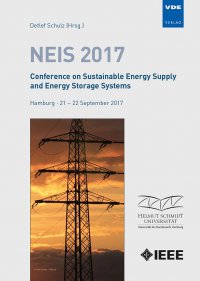Comparison of Conversion Efficiencies and Energy Yields of Micro-Inverters for Photovoltaic Modules
Conference: NEIS 2017 - Conference on Sustainable Energy Supply and Energy Storage Systems
09/21/2017 - 09/22/2017 at Hamburg, Deutschland
Proceedings: NEIS 2017
Pages: 5Language: englishTyp: PDF
Personal VDE Members are entitled to a 10% discount on this title
Authors:
Krauter, Stefan; Bendfeld, Joerg (University of Paderborn EET-NEK, Paderborn, Germany)
Abstract:
To compare efficiency and yield of most micro-inverters available on the world market in 2014-2017, an in- and outdoor test laboratory at the University of Paderborn have been set up. The inverters have been fed by identical and calibrated crystalline silicon PV modules of 215 Wp at STC. To monitor accurately AC power output and yield, each of the microinverters has been equipped with a calibrated precision electricity meter. For micro-inverters requiring control units for grid-feeding that has been acquired also. The comparison includes energy yield over one to two years, efficiency-load characteristics, recovery times after low irradiance levels, cost consideration: While the market is quite new, the range of purchase costs varies considerably between the models in comparison, sometimes inverter costs are higher than module costs, particularly if an additional grid-connection or interface device is necessary for operation. The weighted conversion efficiency according to EU and CEC standards has been measured and compiled. While some inverters have been optimized for high irradiance levels, they ranked better at the CEC-efficiency, others performed very well also for low irradiance levels, thus ranking higher at in the EU-efficiency tables. These results deviated from the actual energy yield measurements, which showed a slightly different ranking. One device showed an extreme deviation of the efficiency rating from the yield results. An accurate but very slow MPPT algorithm that hardly could follow quickly changing irradiance conditions has possibly caused this effect. Apparently, some inverters have been optimized to show excellent EU and CEC efficiency ratings. The new inverters featuring two inputs did not show an exceptional performance at the EU and CEC ratings (ranking 5-8 only), but they achieved rank 1 and 3 at the energy yield ranking. Further investigations to determine lifetime-yield are on the way, including degradation and temperature effects.


